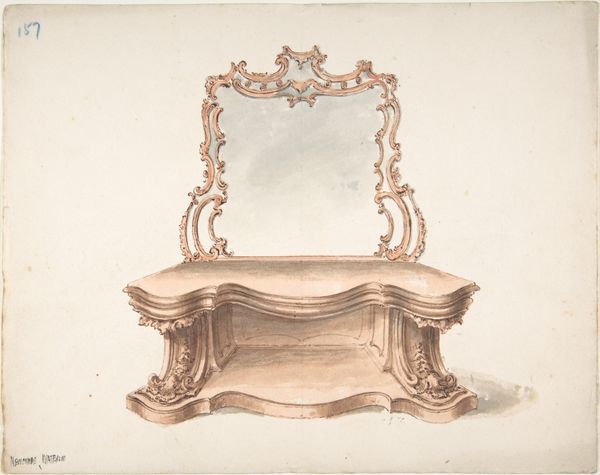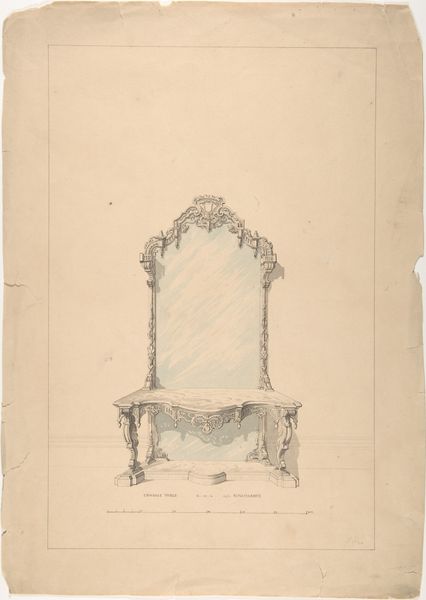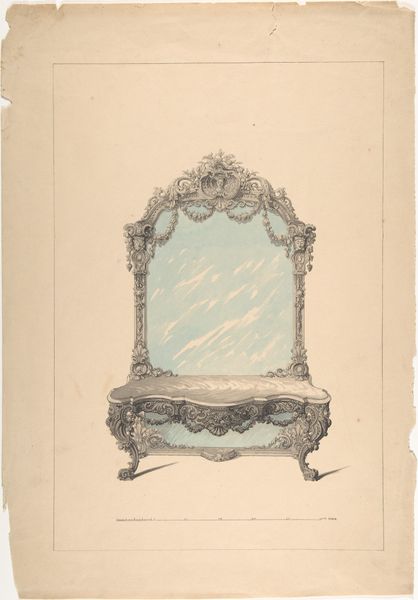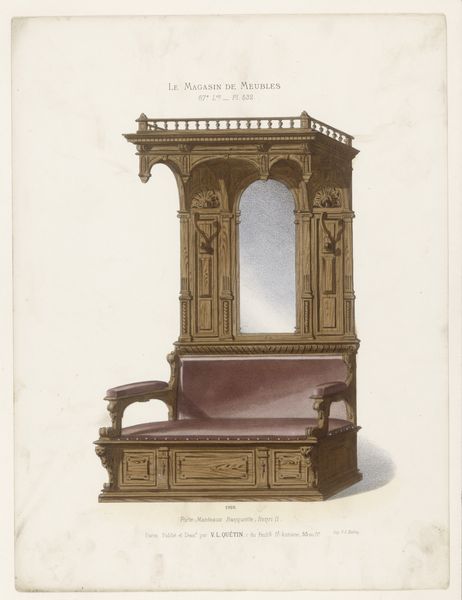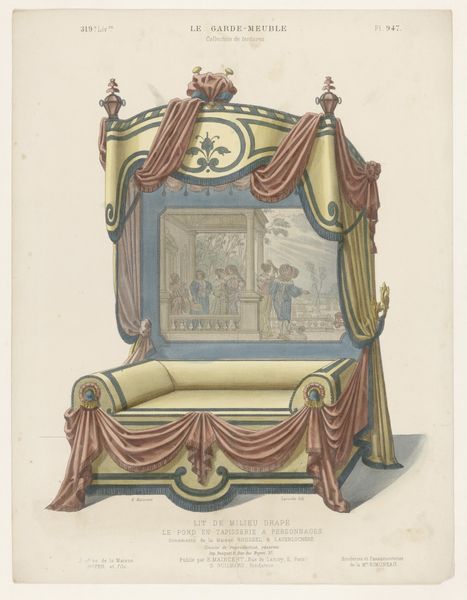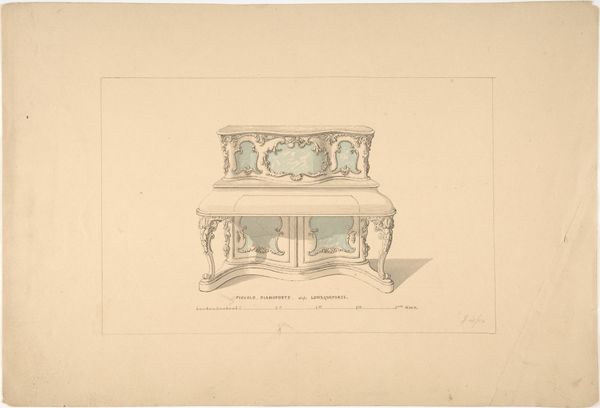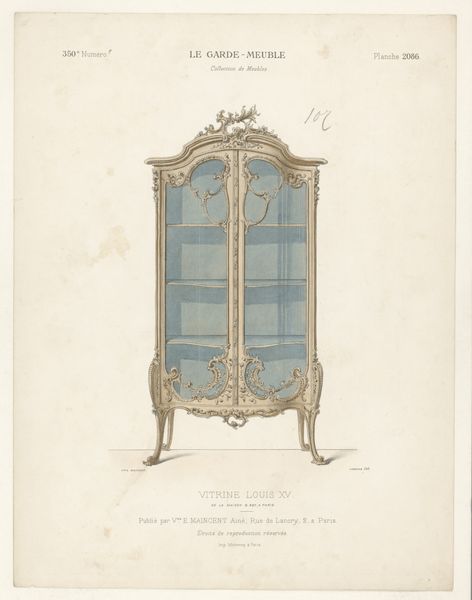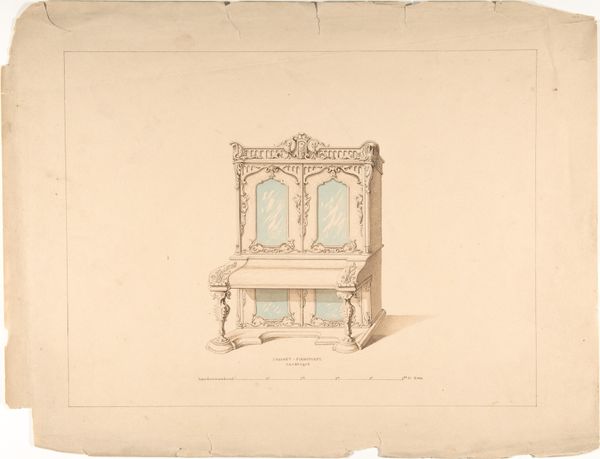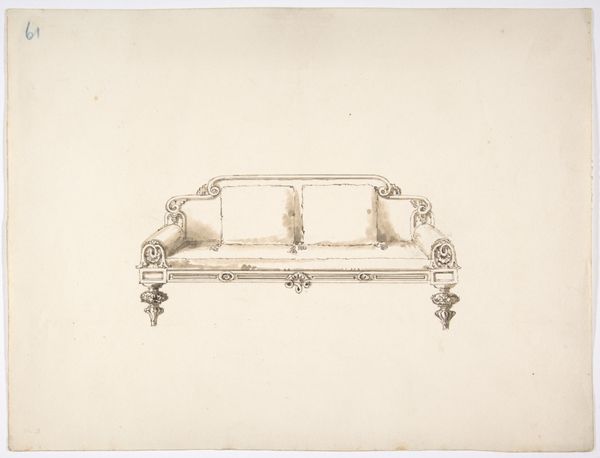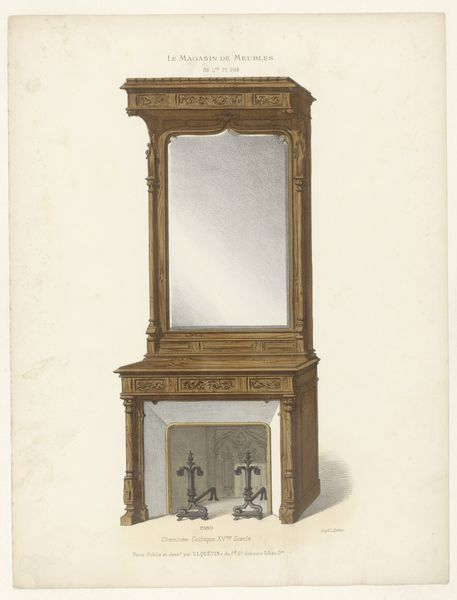
Design for Cabinet Pianoforte, Louis Quinze Style 1835 - 1900
0:00
0:00
Copyright: Public Domain
Robert William Hume designed this cabinet pianoforte in the Louis Quinze style, rendered with delicate watercolor and ink. Notice the profusion of floral motifs, not merely decorative, but symbolic of nature's bounty and the ephemeral beauty of life, a common theme in the arts of the period. Observe how the fluid, asymmetrical lines of the Rococo style evoke a sense of movement and emotional exuberance. Such forms can be traced back to the Hellenistic period, finding new expression here as a revolt against the rigid formality of previous eras. This striving for dynamic expression, seen mirrored across centuries, resonates with humanity's deep-seated desire for liberation. Consider the inherent tension in these decorative arts: a desire for naturalism, yet constrained by the artifice of courtly life. It is this perpetual cycle of constraint and release that informs so much of our cultural expression.
Comments
No comments
Be the first to comment and join the conversation on the ultimate creative platform.

